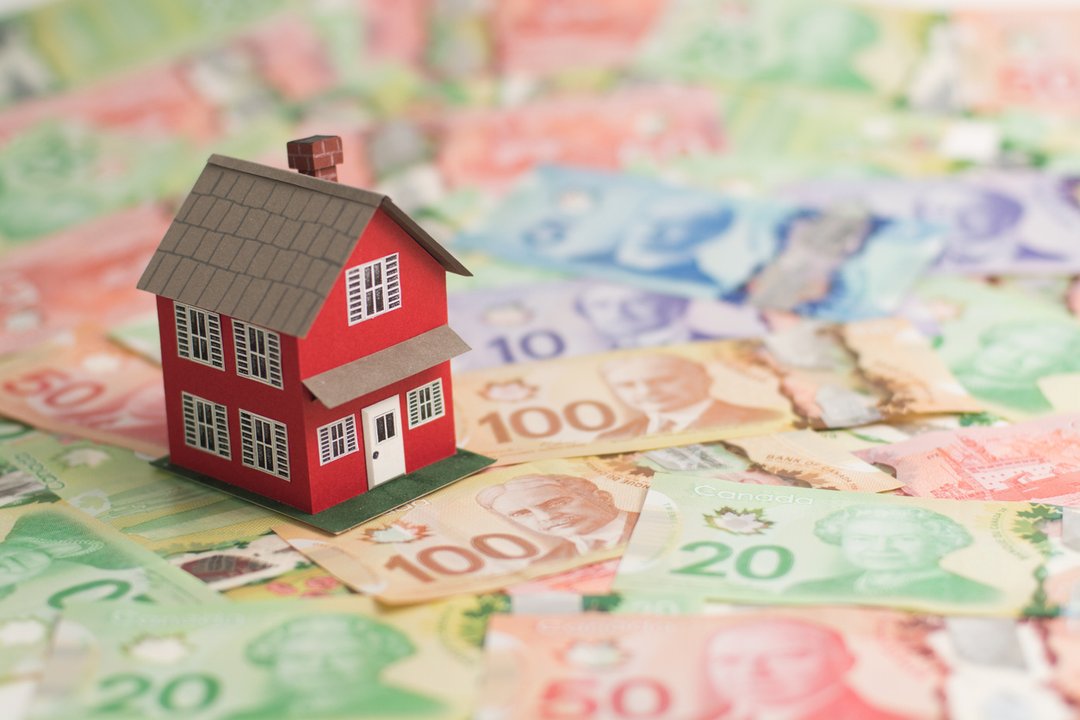
A HELOC, or home equity line of credit, uses the equity in your home as a guarantee that you’ll repay any funds that you borrow.
While there are some similarities to a mortgage, a HELOC allows its users to only use the amount of money needed, and only pay interest on the funds used.
Did you buy your home at the peak market? Have you been using your HELOC a lot since then? You may be wondering how that might impact your HELOC.
We’ll look at what a HELOC is, how it works, how it is tied to your home’s value, and what could happen if your home value drops.

iStock-471832336.jpg
What is a HELOC and how does it work?
Similar to a credit card or unsecured line of credit, a HELOC is a revolving credit account: You’re able to borrow money whenever you want, repay it and reborrow the funds later on, up to your credit limit.
To get a HELOC, you need a considerable amount of equity in your home: a minimum of 20 per cent. Once you have a HELOC, you’re able to borrow up to 65 per cent of your property’s value.
HELOC interest rates tend to be higher than mortgages but come with more flexible repayment terms. With a traditional mortgage you’re required to make payments that include a principal payment, and interest. However, with a HELOC, you can typically make interest-only payments. This makes the payments a lot more affordable.
HELOCs come in two main types: a HELOC on its own and a HELOC that’s combined with your mortgage.
A HELOC on its own
With a HELOC on its own, you take out a HELOC in addition to your mortgage. The HELOC doesn’t have to be with the same lender, and the mortgage and HELOC are separate from one another.
When you pay down your mortgage, it has no bearing on the HELOC credit limit. The HELOC credit limit remains the same until you make a formal request with the lender to change it.
This type of HELOC can be ideal if you want to borrow funds for a one-time home renovation project, but don’t anticipate needing more funds later on.
A HELOC combined with a mortgage
The second type of HELOC is a one combined with a mortgage. This is known as a readvanceable mortgage, but can go by a different name, depending on the lender.
With a readvanceable mortgage, the mortgage and HELOC are combined into one product. The advantage here is that as you pay down the mortgage portion, the HELOC portion credit limit increases.
This makes the new higher HELOC credit limit almost immediately available to you to use for purposes such as home renovations, debt consolidation or investing.
What could happen if your home value drops?
For the first time in years, we are seeing home values drop across the country, coast to coast. Higher mortgage rates are one of the main causes for falling home prices.
Let’s say you bought a home in the last year or two and your home has fallen in value. Or on the extreme end, you bought at the peak of the market and you have used your HELOC a lot since then. What happens to your HELOC in those instances?
There are a few things that could happen. Note that these apply for both a HELOC on its own and a HELOC combined with a mortgage.
Your HELOC credit limit could be lowered
If your home value drops below your mortgage amount, your lender could choose to lower the maximum borrowing limit on your HELOC.
Your lender is able to set your new HELOC borrowing limit at its own discretion. It could be near or above the current balance on your HELOC. In some cases your HELOC limit could be reduced to less than the outstanding balance.
If that were to happen, you would need to pay off that portion immediately.
You could have to pay back your HELOC in full
A HELOC is a callable loan. This means that your lender can request that you repay some or all of it at any one time.
Your lender might do that if something has changed on your end that makes it harder for you to repay it. For example, if you have missed payments or your credit score has fallen a lot. If either of those happen, your lender could recall your HELOC.
Switching your HELOC to a mortgage
A third option lenders have is to switch the line of credit from a HELOC to a mortgage.
Unlike a HELOC, with a mortgage you would need to make interest and principal payments. This means that your minimum payment could go up quite a bit.
How likely is this to actually happen?
Although never say never, the likelihood of either of those scenarios playing out is less common. You can protect yourself by not borrowing up to your HELOC credit limit, maintaining a good credit score and making your HELOC payments on time.
If home prices fall slightly your lender isn’t likely to take action However, if home prices drop considerably and you’re borrowing the maximum of your HELOC, that’s when your lender may choose to act.
If your lender chooses to act, they’re a lot more likely to lower your HELOC credit limit or force you to switch to making interest and principal payments.
Comments are closed.
